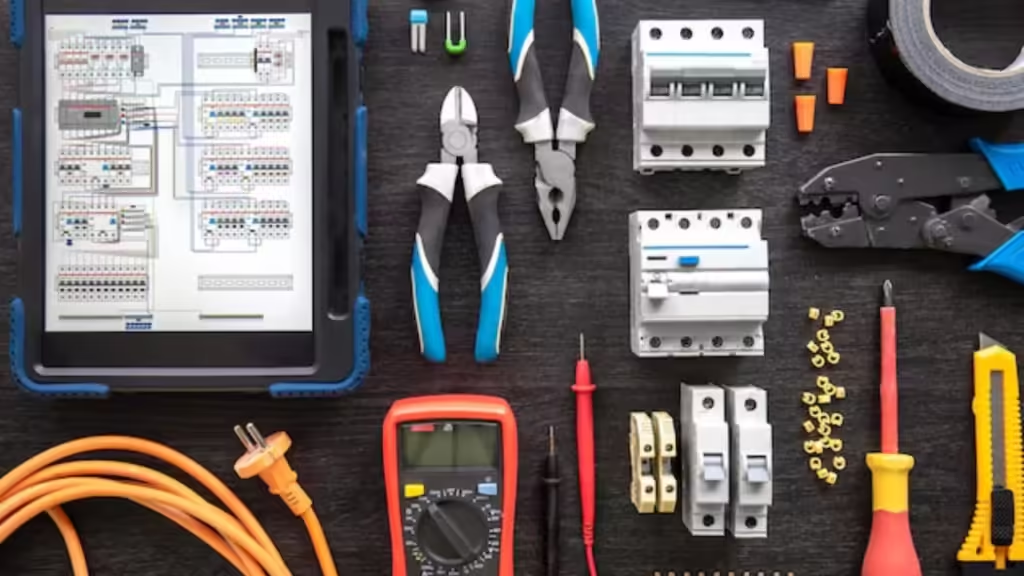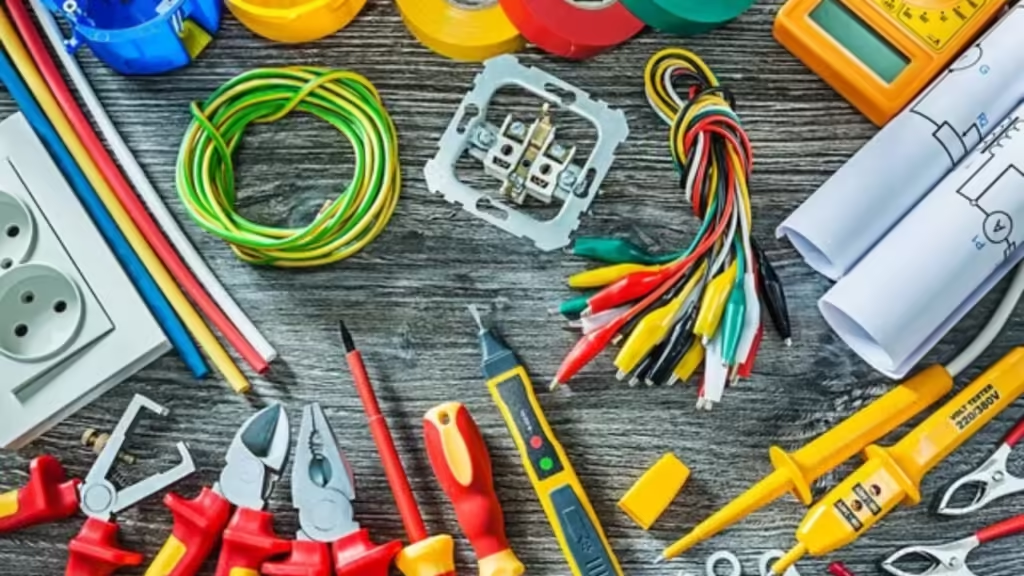Electrical equipment has become an indispensable part of our daily lives, powering our homes, offices, and industries. From smartphones and laptops to heavy machinery and complex industrial systems, these devices have revolutionized the way we live and work. However, with great convenience comes great responsibility. The improper use or maintenance of electrical equipment can lead to serious hazards, putting lives and property at risk.
In this comprehensive guide, we’ll delve into essential safety practices for electrical equipment, ensuring the well-being of you, your family, and your colleagues. By understanding the risks associated with electrical devices and implementing proper safety measures, we can create a safer environment for everyone.

Understanding electrical hazards
Before we dive into specific safety practices, it’s crucial to understand the various electrical hazards we might encounter. Awareness of these risks is the first step in preventing accidents and ensuring safety.
Common electrical risks
- Electric shocks: These occur when a person comes into contact with an electrical current. Depending on the intensity and duration of the shock, effects can range from mild discomfort to severe burns or even death.
- Electrical fires: Faulty wiring, overloaded circuits, or malfunctioning equipment can generate excessive heat, leading to fires that can quickly spread and cause extensive damage.
- Arc flashes: These are explosive bursts of heat and light caused by electrical faults. They can reach temperatures of up to 35,000°F and cause severe burns, eye damage, and other injuries.
- Overloaded circuits: When too many devices draw power from a single circuit, it can lead to overheating, potentially damaging equipment or starting fires.
Home electrical safety
Our homes are filled with electrical devices, from kitchen appliances to entertainment systems. Ensuring their safe operation is crucial for protecting our families and property.
Proper installation and maintenance
One of the most important aspects of home electrical safety is proper installation and maintenance of electrical systems and devices.
Regular Inspections
Conduct regular inspections of your home’s electrical systems, including:
- Outlets and switches: Look for signs of discoloration, crackling sounds, or warm temperatures, which may indicate problems.
- Circuit breakers: Ensure they’re not frequently tripping, which could signal an overloaded circuit.
- Wiring: Check for frayed or exposed wires, especially in older homes.
If you notice any issues during these inspections, it’s crucial to contact a licensed electrician immediately. Attempting DIY repairs on electrical systems can be extremely dangerous and may violate local building codes.

GFCI Protection
Ground Fault Circuit Interrupter (GFCI) outlets are a critical safety feature for areas prone to moisture. Install GFCI outlets in:
- Kitchens
- Bathrooms
- Outdoor spaces
- Laundry rooms
- Garages
GFCIs can prevent electric shocks by quickly shutting off power when they detect a ground fault, potentially saving lives.
Safe Use of Electrical Appliances
Proper use of electrical appliances is essential for maintaining a safe home environment.
Avoid overloading
One common mistake is plugging too many devices into a single outlet or power strip. This can lead to overheating and potentially starting a fire. Be mindful of the power requirements of your devices and spread them across multiple circuits when necessary.
Unplug unused devices.
When not in use, unplug small appliances. This not only saves energy but also reduces the risk of electrical fires. It’s especially important for devices that generate heat, such as hair dryers or space heaters.
Workplace electrical safety
In the workplace, electrical safety takes on added importance due to the potential for more powerful equipment and the responsibility for employee safety.
Training and education
Comprehensive training is the cornerstone of workplace electrical safety. Ensure all employees receive proper training on:
- Identifying potential hazards: This includes recognizing signs of worn or damaged equipment, understanding the risks of overloading circuits, and being aware of the dangers of water near electrical devices.
- Proper use of equipment: Each piece of electrical equipment should be used according to manufacturer instructions and company safety protocols.
- Emergency procedures: Employees should know how to respond in case of an electrical emergency, including how to safely shut off power and when to evacuate.
Regular refresher courses can help keep safety at the forefront of everyone’s mind.
Personal Protective Equipment (PPE)
For employees working directly with electrical equipment, proper PPE is essential. This may include:
- Insulated gloves: These protect against electric shocks when handling live wires or equipment.
- Safety glasses or face shields: These guard against arc flashes and flying debris.
- Non-conductive footwear: This provides an additional layer of protection against ground faults.
Ensure that all PPE is regularly inspected and replaced as needed to maintain its protective qualities.
Lockout/Tagout Procedures
Lockout/Tagout (LOTO) procedures are critical for preventing accidental energization of equipment during maintenance or repair. These procedures typically involve:
- Shutting off the power source
- Locking the power source in the off position
- Tagging the locked-out equipment to indicate it should not be operated
- Verifying that the equipment is de-energized before work begins
Strict adherence to LOTO procedures can prevent serious accidents and save lives.
Electrical equipment maintenance
Proper maintenance of electrical equipment is crucial for both safety and efficiency.
Regular inspections and testing
Schedule routine inspections and testing of electrical equipment by qualified professionals. This should include:
- Visual inspections for signs of wear or damage
- Electrical testing to ensure proper functioning
- Thermal imaging to detect overheating components
Regular maintenance can identify potential issues before they become serious problems, improving safety and extending the lifespan of your equipment.

Proper Storage
Store electrical equipment in appropriate conditions to prevent damage and ensure safe operation.
- Keep equipment in dry, clean areas to prevent moisture damage and dust accumulation.
- Avoid storing equipment near flammable materials.
- Protect equipment from extreme temperatures, which can affect performance and safety
Emergency Preparedness
Despite our best efforts, emergencies can still occur. Being prepared can make a crucial difference in the outcome.
First Aid for Electrical Injuries
Train employees and family members in basic first aid for electrical injuries, including:
- CPR: essential for reviving victims of severe electric shock
- Treatment for burns: Electrical burns can be severe and require immediate attention.
- Proper response to electric shock: Understanding how to safely approach and assist a shock victim
Fire Safety
Install and maintain fire extinguishers rated for electrical fires (Class C) in easily accessible locations. Ensure everyone knows how to use them properly.
Conclusion
Electrical safety is not just a set of rules to follow; it’s a mindset that should be integrated into our daily lives. By understanding the risks associated with electrical equipment and implementing these best practices, we can significantly reduce the likelihood of accidents and injuries both at home and in the workplace.
Remember, electrical safety is everyone’s responsibility. Stay informed, stay vigilant, and prioritize safety in all your electrical endeavors. By doing so, we can create safer environments for ourselves, our families, and our colleagues, ensuring that we can continue to enjoy the benefits of electrical technology without unnecessary risks.

